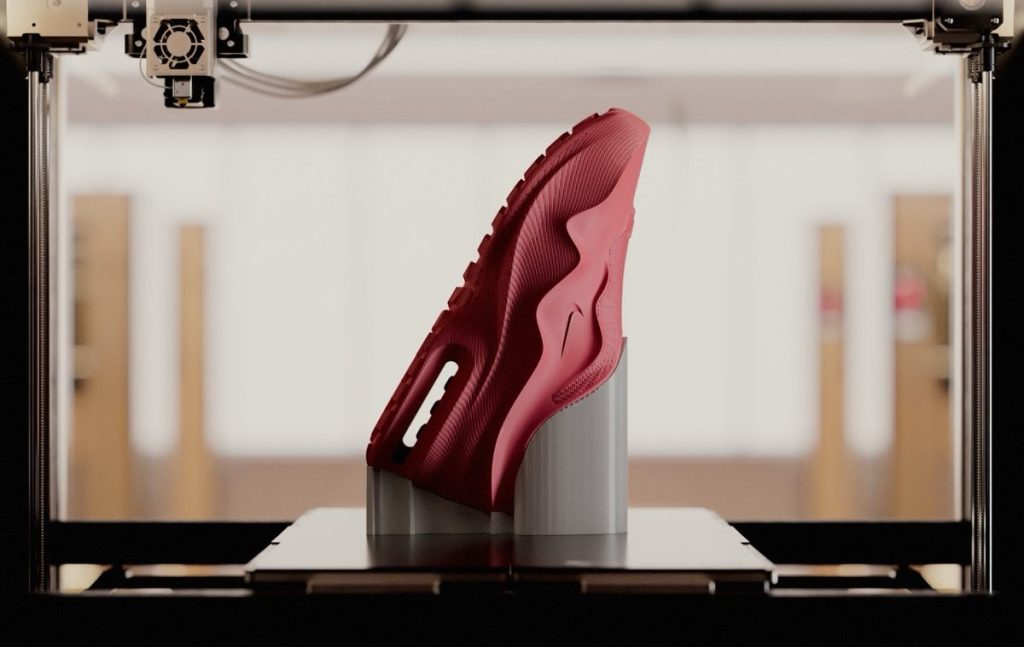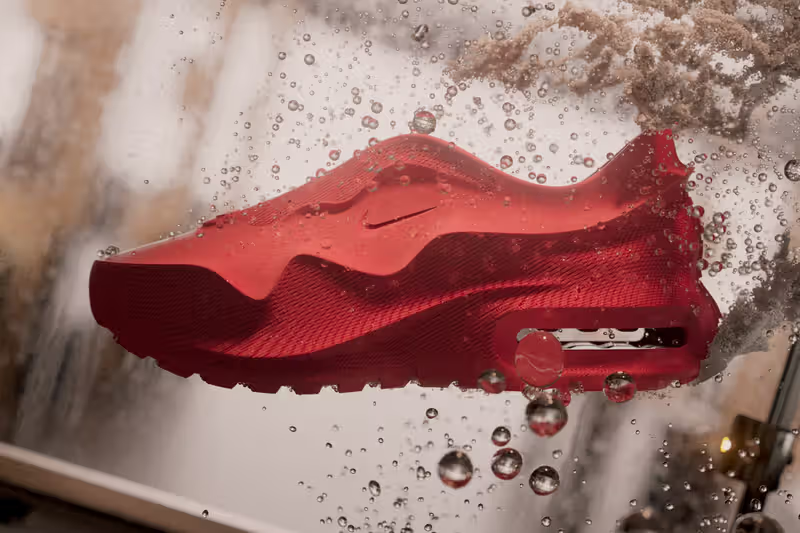Nike has taken a giant leap forward in footwear innovation with its latest creation: the Air Max 1000. Unveiled at ComplexCon in Las Vegas, these shoes are a groundbreaking step in the world of 3D printing. In collaboration with Zellerfeld, a company already known for its expertise in 3D-printed shoes, Nike has developed a new version of its iconic Air Max design, marking the first time that a Nike shoe has been made almost entirely from 3D-printed materials.
An Updated Take on a Classic: The Air Max Legacy

The Air Max 1000 draws inspiration from Nike’s original Air Max 1, which debuted in 1987 as the brand’s first shoe featuring a visible air cushion in the heel. The signature air cushion feature is retained in the new design, although it remains non-3D printed. However, almost everything else about the Air Max 1000 is the result of 3D printing—from the outsole to the upper and midsole.
The innovative use of 3D printing allows Nike to experiment with design possibilities that would have been impossible using traditional shoe manufacturing techniques. As Nike’s Chief Innovation Officer, John Hoke, explains, the 3D printing process allows the company to explore “next-level manufacturing” solutions that elevate both performance and aesthetics.
Design and Materials: A Fully Flexible, Customizable Fit
One of the most striking features of the Air Max 1000 is its flexible, seamless construction. The upper portion of the shoe is created from a single flexible material—a significant departure from the multiple components typically used in traditional footwear. This innovative approach not only makes the shoe more comfortable but also eliminates the need for laces, allowing the Air Max 1000 to be slipped on and off with ease.
The use of 3D printing also offers Nike the ability to adjust the density and texture of different sections of the shoe. For example, the outsole at the bottom is more rigid and supportive, providing the necessary traction and durability, while the upper sections are softer and more flexible, ensuring a snug fit that adapts to the foot’s shape. This level of customization wouldn’t have been achievable using conventional manufacturing processes, highlighting the potential of additive manufacturing in footwear.
Bold Colors and Limited Availability
Nike initially teased the Air Max 1000 in a bold bright red colorway, but during the launch at ComplexCon, additional colors were revealed. Influencers and event attendees showcased a range of hues, including orange, blue, white, and black, with some pairs featuring a striking green air cushion.
Despite the buzz, the Air Max 1000 remains exclusively available in limited quantities. A select number of pairs were distributed at the event, but only 1,000 lucky attendees were given the chance to preorder the shoes. There has been no official announcement regarding a broader release to the public, nor has Nike revealed pricing details. However, to put things into perspective, similar 3D-printed shoes from Zellerfeld, like a high-top design, retail for nearly $400, while simpler designs like sandals are priced at $159.
Nike’s Long History with 3D-Printed Footwear
The Air Max 1000 is not Nike’s first foray into the world of 3D printing. In 2017, Nike launched the VaporFly Elite Flyprint, a lightweight, breathable shoe upper made entirely using 3D-printed textiles. This was the first instance of a 3D-printed textile upper in performance footwear. While Nike has also incorporated 3D-printed midsoles in its products over the years, the Air Max 1000 represents a new frontier by utilizing 3D printing to create an entire shoe.
Nike’s competitor, Adidas, is also exploring similar territory. The brand’s new Climacool24 shoes, which debuted in October, are made entirely from 3D-printed materials, further pushing the boundaries of what’s possible with this technology in footwear.
The Future of Footwear?
The Air Max 1000 is a significant step toward the future of footwear, where customization, flexibility, and sustainability could become the norm. With 3D printing, Nike has the ability to create shoes that are not only more efficient and tailored to the individual but also potentially more sustainable, as the production process minimizes waste compared to traditional methods.
While Nike has not confirmed when the Air Max 1000 will be widely available, the shoes are a bold showcase of the company’s commitment to innovation. As 3D printing continues to advance, it’s likely that we’ll see even more revolutionary designs in the future. For now, the Air Max 1000 serves as a reminder that the future of footwear is already here—and it’s being printed in three dimensions.

